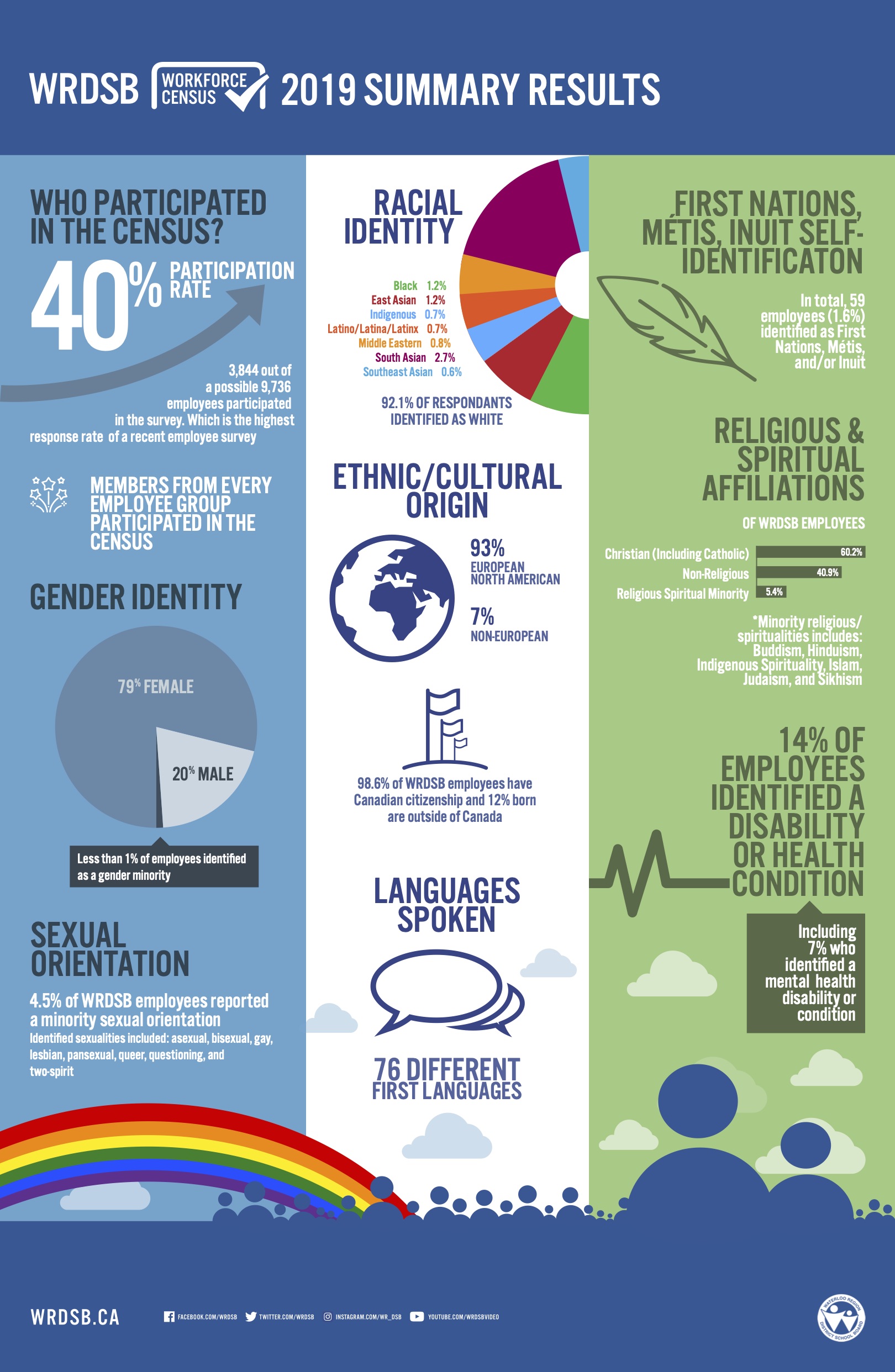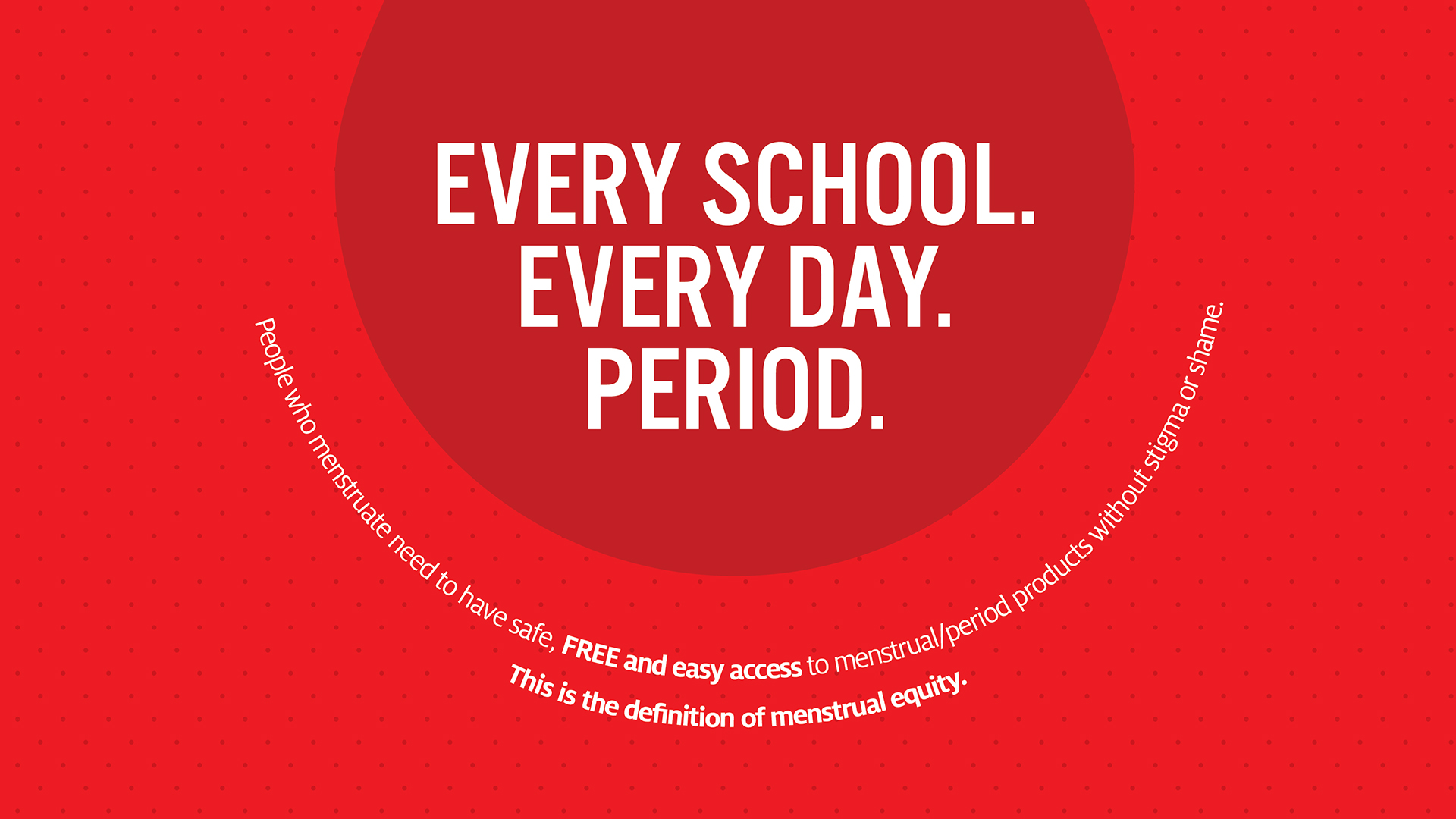WRDSB Prioritizes Equity and Diversity in the Workplace
In April 2019, the WRDSB launched the Workforce Census in order to gain detailed insight as to the cultural, social and demographic makeup of our workforce. Peter Rubenschuh, superintendent, Student Achievement and Well-Being, helped to lead the Workforce Census campaign and explained it’s part of the WRDSB’s ongoing commitment to equity and inclusion. The results have allowed us to hear and learn a great deal.
The census asked two main questions. Who are you, and how are you experiencing the WRDSB? The important data comes when drawing a connection between the answers, and working to identify the barriers they reveal in a systematic way. The ultimate goal, he added, is to ensure that all staff members see a commitment to them as individuals, regardless of their identity.
“We’re a public education system. Every student needs to feel valued and have a sense of belonging, in order to succeed,” said Rubenschuh. “The same thing is true for our staff.”
Dana Liebermann, senior manager of the Research and Evidence-based Practice Department, and David Lane, research officer, led the team implementing the census, and explained that while the Workforce Census aligns with new legislation and guidelines from the Ministry of Education, its greater purpose is providing the WRDSB with data on current staff to guide decision-making.
“We are hoping to learn more about who our workforce is,” said Liebermann.
In total, 3844 employees participated in the WRDSB Workforce Census, representing a 40% response rate. Liebermann appreciates all who participated and helped achieve the highest participation rate the board has seen on any system-wide staff survey in recent years.
The Workforce Census is the sign of an organization committed to engaging in data driven decision making, Liebermann explained. It shows that the WRDSB is seeking to better understand their growing workforce and plan for the future accordingly. Her hope is that this process strengthens the trust between staff members and the organization, as they see actions taken as a direct result of the census.
Kim Radersma, workplace equity officer, is working to implement the action side of the Workforce Census, and explained that the coordinated efforts will ultimately aim to help all aspects of the organization understand how a focus on equity will help every single employee and student feel included and valued. It’s not just about checking a box, Radersma explained, it’s about a greater ideological shift.
The impact on WRDSB students is chief amongst these benefits. Studies have shown even one racialized teacher in a school increases graduation rates and decreases dropout rates of racialized students. When students see themselves represented, they see a person who understands the barriers they face and as Radersma put it, “a person who gets me in a way other people don’t.”
Radersma is developing a new procedure that will involve training for anyone who sits on a hiring panel that invites them to be aware of biases, as well as the importance and value of having a diverse workforce. Sometimes this can be as simple as rewriting interview questions to ensure they are not presenting unintended barriers, or ensuring there is diverse representation on the hiring panel. All of this work aims to help support our staff and students – each and every one.
For Liebermann, the success of the Workforce Census is a credit to the coordinated efforts between the numerous departments involved in supporting the survey. From the Research and Evidence-based Practice Department, to Human Resources, Communications and Human Rights and Equity – each of these teams played a role in making this effort a success.
“I think that the Workforce Census was a great demonstration of different departments working collaboratively,” said Liebermann.




